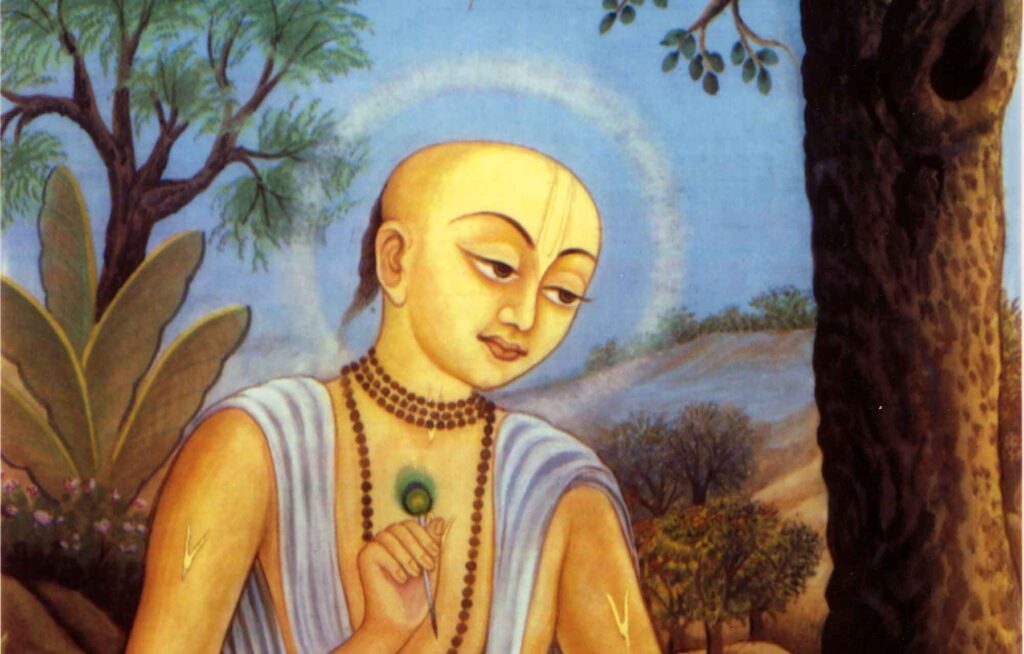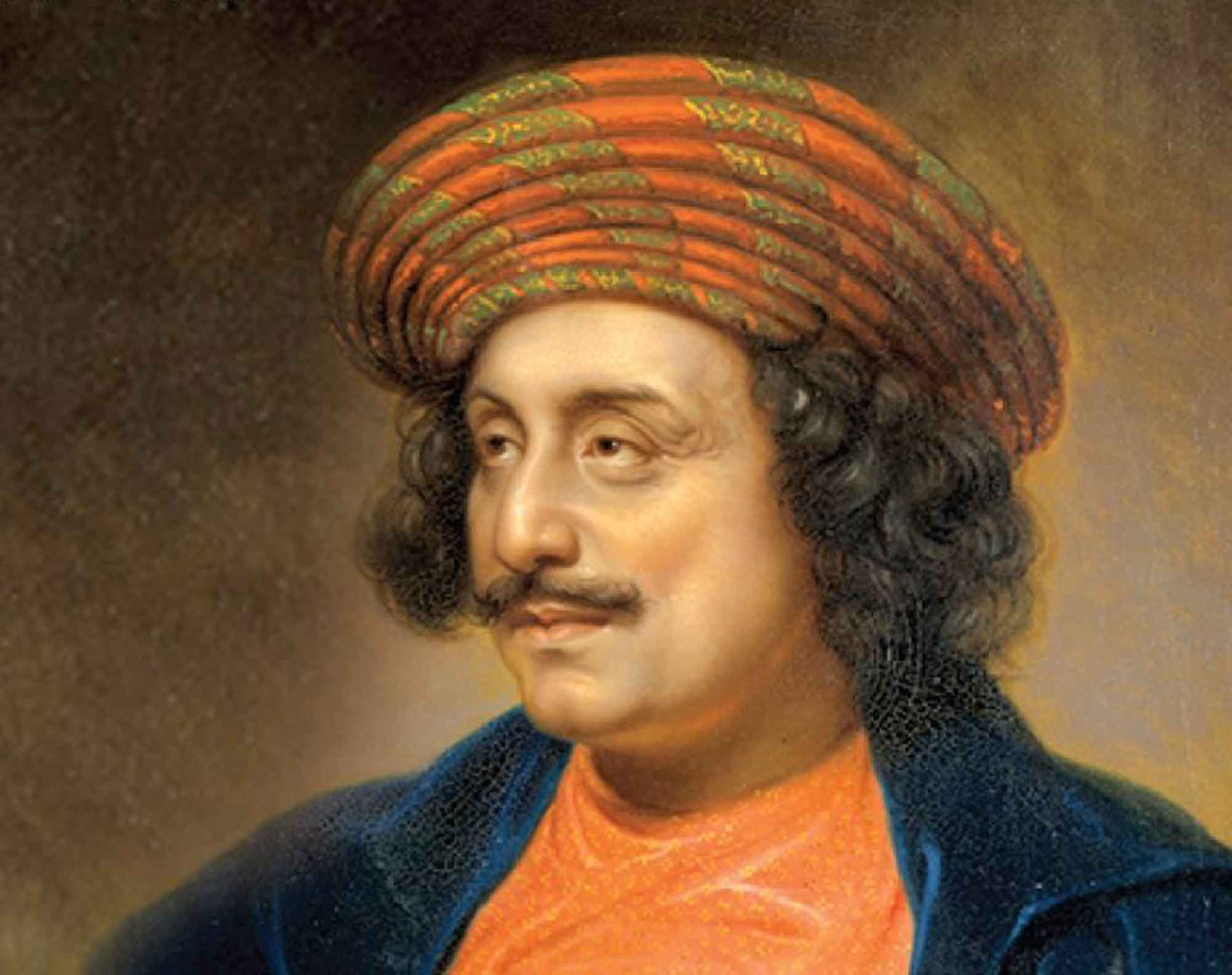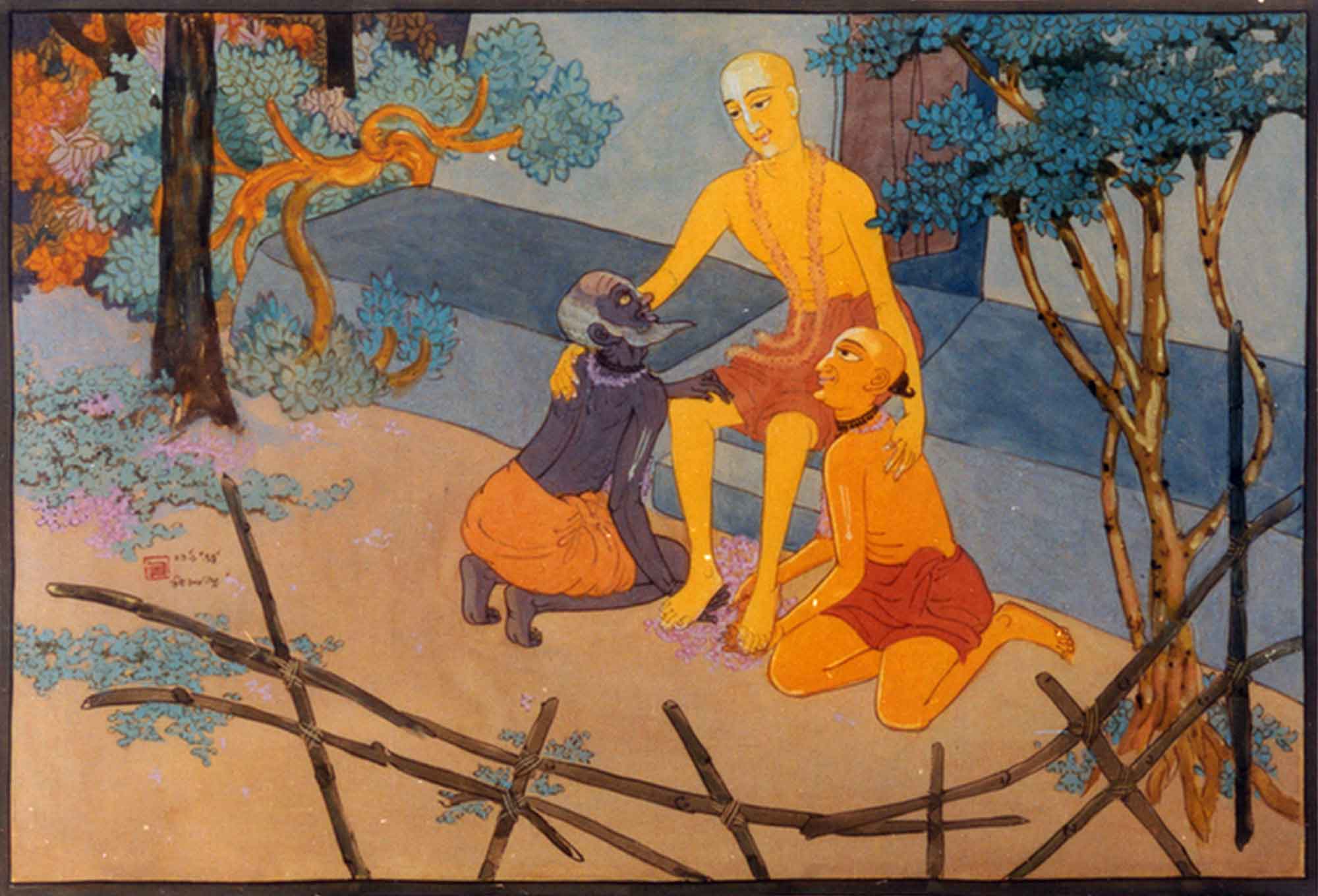Overview
Kalikātāra Kīrtana (Kīrtana in Kolkata) was published in Sajjana Toṣaṇī Vol.11, issue 3 in 1899. Bhaktivinoda Ṭhākura happily reports on the many kīrtanas going on in the city of Kolkata, but also points out how the citizens may be initiating kīrtana due to the plague, and have not fully understood the true necessity of kirtana. He also mentions the unfortunate use of foreign musical instruments, as well as modern tunes being introduced into kīrtana
(translated by Swami B.V. Giri)
Since the last 14th of Caitra, nāma-saṅkīrtana has been taking place in a grand ceremony in the countryside of Calcutta. A thought arose in the minds of the leaders of the Śrī Gaurāṅga Samāja, and driven on by that thought, the first saṅkīrtana was performed on the appearance day of Śrī Śrī Mahaprābhu at Biden Street in order to help the city dwellers. According to the view of many elderly persons, such a saṅkīrtana festival had never before taken place in the city of Calcutta. On that day, such grace of Śrī Gaurāṅgadeva was seen that even many misers performed miṣṭānna-sevā (distribution of sweets) to satisfy the performers of kīrtana. Whether they were atheists or devotees of Bhagavān, all joined in the chanting of śrī-nāma-saṅkīrtana with one heart. Such a grand nāma–saṅkīrtana should be performed in all countries on the appearance day of Śrī Mahāprabhu.
Due to this festival the citizens became fond of kīrtana. What’s more, abandoning all other activities, kīrtana groups were set up in every village at great expense. All this is the conduct of Mahāprabhu. There is no way for the jīva except for hari-nāma – especially in Kali-yuga. It is a matter of great happiness that people from all over Bhārata have joined in śrī-nāma-kīrtana in Calcutta. Especially those in the western provinces who have never heard of Mahāprabhu’s Name became intoxicated by chanting the names of Nityānanda-Gaurāṅga during hari-nāma kīrtana. In Baḍa Bazaar, many shopkeepers and brokers etc. from the western provinces took part in the nagara-kīrtana with great care by spending large amounts of money. Residents of every village in Calcutta have performed grand elaborate kīrtana in their respective villages. Although a lot of work going on is competitive, there is nothing wrong with śrī-nāma kīrtana.
On the advent day of our Śrī Mahāprabhu, we were engaged in holding a grand appearance festival at Śrī Navadvīpa Māyāpura, which is the birth place of Mahāprabhu and kīrtana. Some days after we came to Calcutta and were very happy to see people listening to the kīrtanas. Seeing all the kīrtanas, we had this feeling in our heart. This is the Lord’s līlā. Whatever the Lord decides to do, happens. The jīva has no ability. In that Calcutta, where dharma was becoming dead, by the potency of the Lord, hari-kīrtana, which is the essence of all dharma, has become strong. But despite all these encouraging activities, Mahāprabhu has not distributed His most confidential secret of prema in this metropolis. He has given sufficient encouragement and persuaded all sorts of people to preach, and He has even give them the strength to reject worldly pleasures, however He has not unlocked the door of divine prema-bhakti. He has given the chanters a desire in their hearts for kīrtana, but has not yet given the instinct to follow the path of the previous mahājanas even today. Many people gave up their leather shoes to take part in the kīrtana with khol and karatāla, but I did not see tulasī beads around the necks of many. Even if some people are wearing tulasī beads they are new ones. This raises some doubts. Many were not decorated with twelve tilaka markings. That day we went to Nimtala Ghāta and the next day to Joḍā Śāṅko to hear kīrtana performed in the style of the mahājanas, yet we didn’t find anything like that anywhere. It made us sad to hear all the popular tunes of the Nyādās, Bāulas, village entertainers and theatre, yet in the midst of that, our sadness was lessened hearing all the eternal names of Hari, Kṛṣna and Rāma. Those who possess prema-bhakti in their hearts generally love the Name to be sung in the old tunes. They don’t want to sing or listen to nonsense. They sing and listen to the traditional songs of hari-nāma. Nowadays, the citizens of this metropolis have not easily grasped the nature of pure bhakti due to lack of good association. They follow their own fanciful concocted method. This is the Lord’s līlā. We can say nothing about it – whatever the Lord desires. When the traditional instruments of khol, karatāla etc. are abandoned, and modern foreign instruments enter all the kīrtanas, there may be plenty of entertainment, but Śrī Bhakti Devī is gradually broken. Nowadays we are so fascinated by anything foreign that we endeavour to incorporate it into our mode of bhajana.
Anyhow our Śrī Gaurāṅga Prabhu is extremely merciful. When He glanced over the city of Calcutta, He gave them the inclination to perform kīrtana, then we hope that He will gradually instill pure bhakti in the hearts of the people of this metropolis.
Some people say that the citizens only started all these kīrtanas with the advent of the plague. Even if that happens, we have no regrets because the injunction is:
akāmaḥ sarva-kāmo vā mokṣa-kāma udāra-dhīḥ
tīvreṇa bhakti-yogena yajeta puruṣaṁ param
(Śrīmad Bhāgavatam 2.3.10)
The meaning is that one who has broad intelligence, whether he is an akāmī (without desire), whether he is a sarva-kāmī (has many desires) or he is a mokṣa-kāmī (desiring liberation), will worship the Supreme Person with intense bhakti. In the age of Kali, kṛṣna-nāma saṅkīrtana is the mahā-yajñā (supreme sacrifice). Whoever is most intelligent, if they have many desires, they will worship Kṛṣna through saṅkīrtana yajña. With the desire to eradicate the plague, one should drive away all other ways and means and with the help of intense bhakti-yoga and perform the mahā-yajñā of kṛṣṇa-saṅkīrtana. If the people of Bombay had imitated the people of Calcutta, they too would have undoubtedly been immediately free from the plague. If the citizens perform saṅkīrtana to eradicate the plague, they are not at fault. There is no doubt that those who are against kīrtana are the greatest enemies of the country.
We have one more thing to say. Let there be saṅkīrtana, but it let it be done on holy days. Pūrṇīmā, Ekādaśī, Gaura Pūrṇīmā, Kṛṣṇāṣṭamī, the month of Kārttika, the month of Vaiśākha, the days when Bhagavān is taken on procession, Saṅkrānti – it is better to perform hari-kīrtana on all these holy days. Let the citizens bestow bliss in our hearts by performing śrī-nāma kīrtana with the traditional tunes of the mahājanas, with the traditional instruments of mṛdaṅga and karatāla, and with pure Vaiṣṇava sentiments. We are happy with their kīrtana festival – now make us supremely happy by performing hari-saṅkīrtana according to the proper standards. The universal guru, Śrī Gaurāṅga will surely bestow the desired result upon them.













